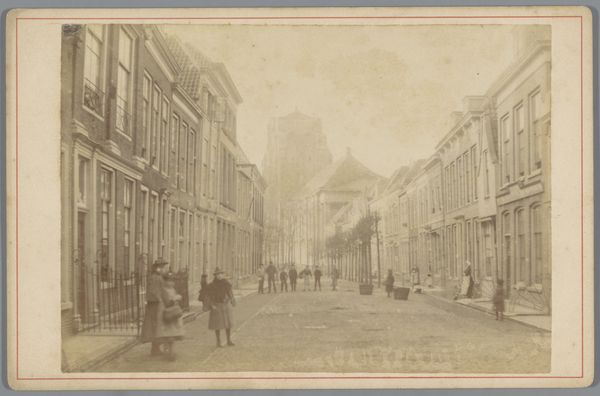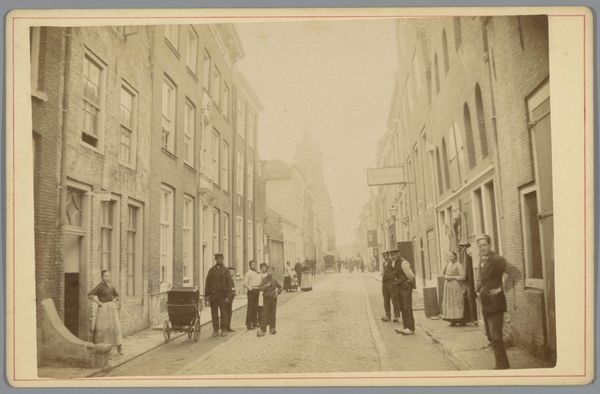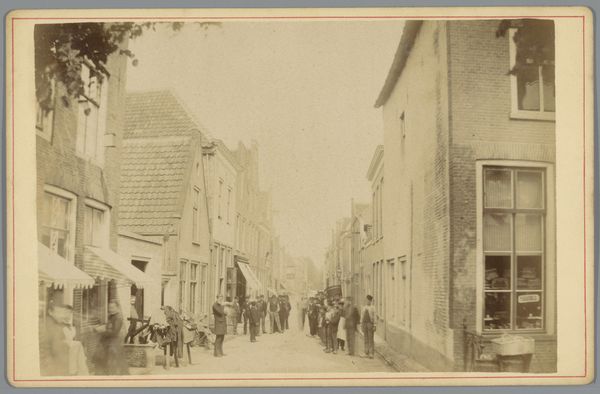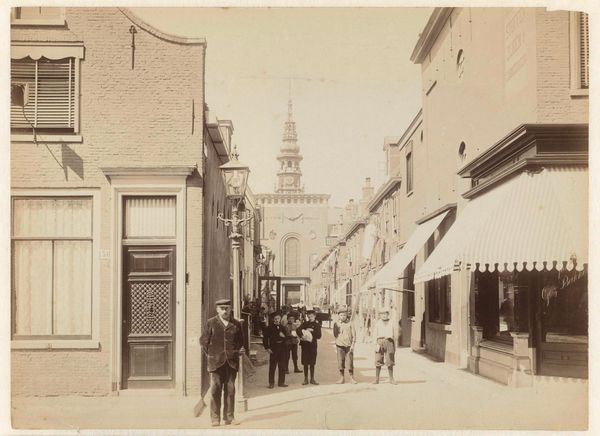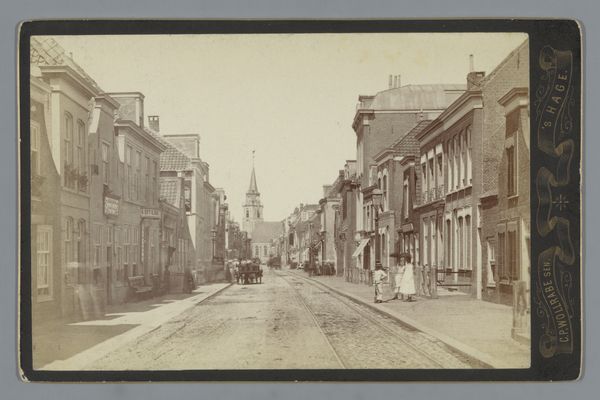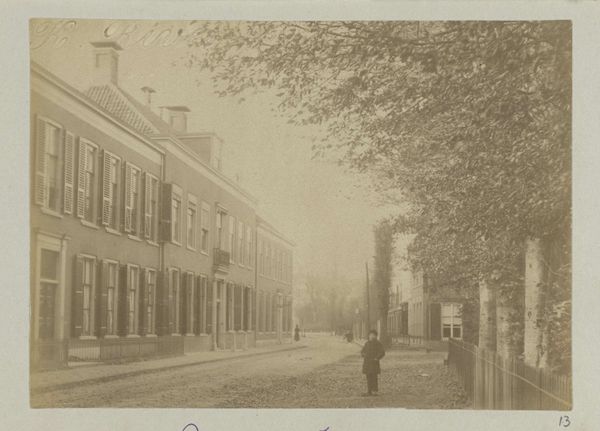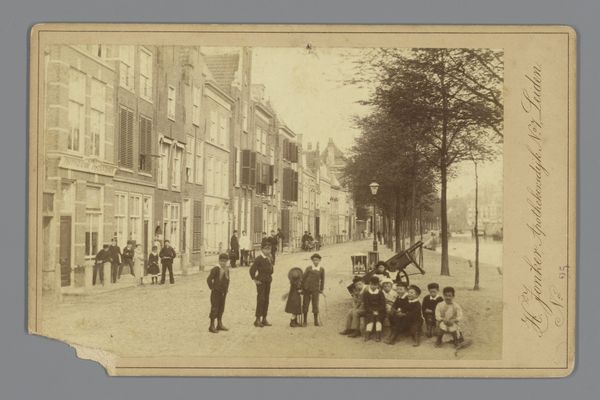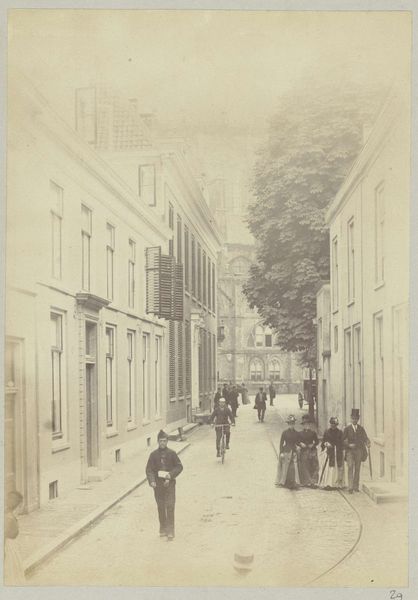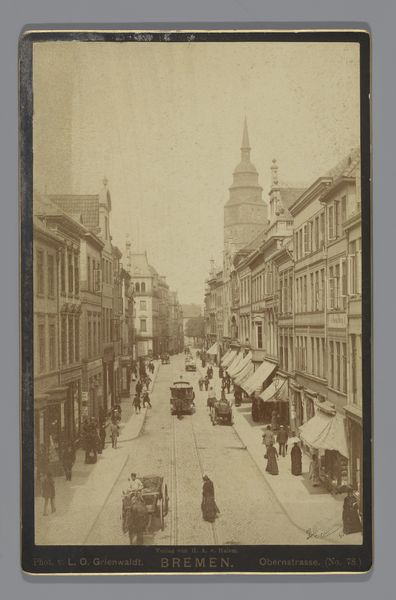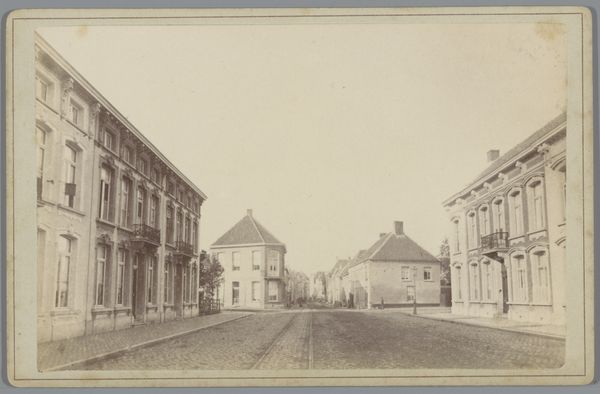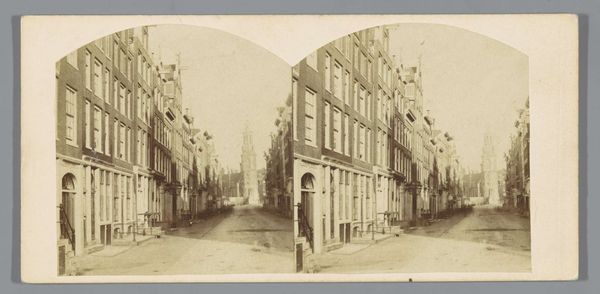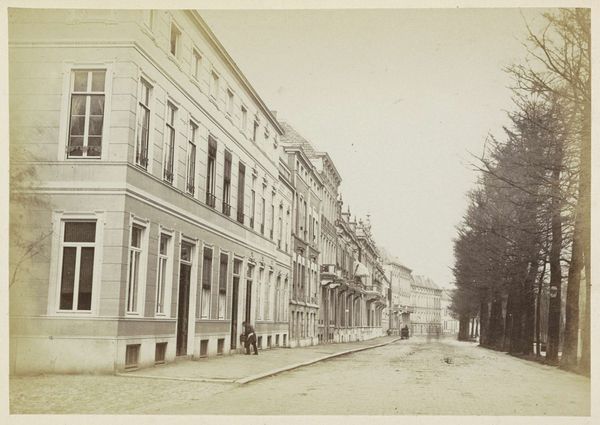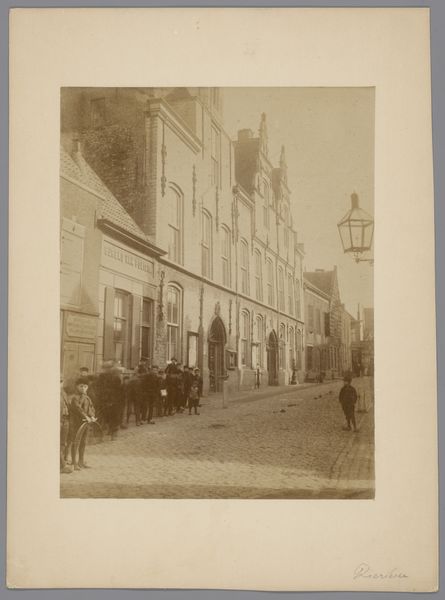
photography
#
landscape
#
photography
#
cityscape
#
genre-painting
#
street
#
watercolor
Dimensions: height 106 mm, width 166 mm
Copyright: Rijks Museum: Open Domain
Curator: I'm struck by the way this photograph captures a specific moment in Amersfoort, likely taken between 1880 and 1940. Editor: It's incredibly atmospheric! The sepia tones and the almost blurry rendering create such an impression of time passing. It's not just a street, it's a lived-in space. Curator: Indeed. Photographer Hendrikus Jakobus Bast gives us more than just a scene; it's about the labor of daily life, and I suspect these folks pictured are not just passing through. Editor: You're right. Look at their clothing, likely all locally manufactured. The photograph speaks volumes about work and community life in the late 19th, early 20th century, which really emphasizes how the photographer’s practice plays an integral role in societal representation and narrative construction. Who has access, whose image is considered worthy, and whose life is being documented is very telling, don't you think? Curator: Absolutely. Bast's choice of photography itself speaks to accessibility, a conscious one over painting, making the city visible and consumable in a modern sense. What I find interesting is how a fairly new mass-production technology – photography, that is – could capture the sense of timelessness of the Amersfoort street, almost at odds, don’t you think? Editor: I think it demonstrates photography's power. It becomes not just a means of documentation, but a tool for shaping memory. Looking closer, how do you interpret the arrangement of figures within the composition? Do you think it hints at social dynamics? Curator: Definitely. See how a larger group stands by, perhaps observers or laborers taking a break? The cobblestones underfoot are important to me, how people navigate material existence. Also, the presence of kids, too, maybe going to work, to the market, all part of city living back then. Editor: Thinking about it, how museums choose to display these street photographs, whether individually or as part of a larger series, dramatically alters how we perceive the reality they claim to reflect. Curator: Precisely. Bast isn’t just capturing the scene; he's actively crafting a certain perception of it, that we further continue or resist nowadays through the medium. Editor: It is a nice little treasure, capturing not only place but also its continuous reinvention. Curator: I agree, making the streets of Amersfoort part of collective cultural narrative through Bast's conscious vision and technical approach.
Comments
No comments
Be the first to comment and join the conversation on the ultimate creative platform.
